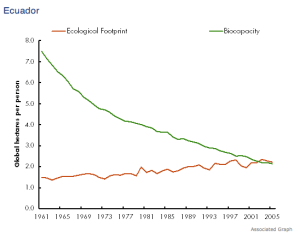NextNow Collab Helps Launch First Summit of Ecological Creditor Nations
 Lynne Twist, Mathis Wackernagel, and Freddy Ehlers. Photo courtesy of Simone Bastianoni.
Lynne Twist, Mathis Wackernagel, and Freddy Ehlers. Photo courtesy of Simone Bastianoni.NextNow Collab helped launch the first Summit of Ecological Creditor Nations (to be held in 2010) by stepping up in October of 2008 as the Summit’s first major financial contributor. The Summit is a project of Global Footprint Network, Pachamama Alliance, and CAN (Community of Andean Nations). The first formal gathering to benefit the Summit was February 2009, hosted by Bill and Lynne Twist of Pachamama Alliance.
Ecological creditor nations are those with biocapacities greater than their ecological footprint. In other words, the bioregion regenerates itself faster than it is consumed. Only 20% of the world is in this category; the rest are ecological debtor countries, regions whose ecological footprint exceeds the regions capacity to regenerate itself. Most of the developed world is in this category. For example, according to Global Footprint Network 2005 research data, the United States has an ecological footprint of 2,810 million global hectares, and a biocapacity of only 1, 496 million global hectares. China’s footprint is 2,787, with a biocapacity of 1,133. Contrast this to Chile whose footprint (at 48.9) is still less than its biocapacity (67.4), or, dramatically, to Madagascar, with a footprint of 20.1, but a biocapacity more than three times greater, at 69.7. (Someday, “Escape to Madagascar” may be a newspaper headline instead of a movie title.) It’s disheartening to see the data, including for the Amazonian Rainforest country of Ecuador, which only a few years ago saw its biocapacity fall below its ecological footprint.
 As developing nations pursue their development goals, a conversation of what constitutes real wealth is necessary to avoid the train wreck that is “ecological debt.”
As developing nations pursue their development goals, a conversation of what constitutes real wealth is necessary to avoid the train wreck that is “ecological debt.”
The point is to create education, communication, and cooperation. According to Mathias Wackernagel, executive director of Global Footprint Network, “By promoting negotiation between nations that have a surplus of ecological assets and those that do not, we can shift 21st century economic thinking from “developing versus developed countries” to ecological debtors and creditors.” This is a necessary shift in awareness to create a necessary shift to One Planet Living.
For at least 20 years many of us in the sustainability movement have been working with corporations to help them embrace new definitions of wealth creation, ones in which the creation of real value–as reflected by how their activities advanced the health and well-being of communities they served–took its proper place. (I still remember the first time I learned that new prisons and alarm systems increased our nation’s “wealth” as reflected by GDP.) With the launch of the Summit of Ecological Creditor Nations, the whole world will have the opportunity to re-examine the concept of wealth, on the most critical scale, and not a moment too soon. If you’re a NextNow member and would like to offer resources, please contact me cwelss@nextnow.org.

[…] Ecological Creditor Nations Summit […]